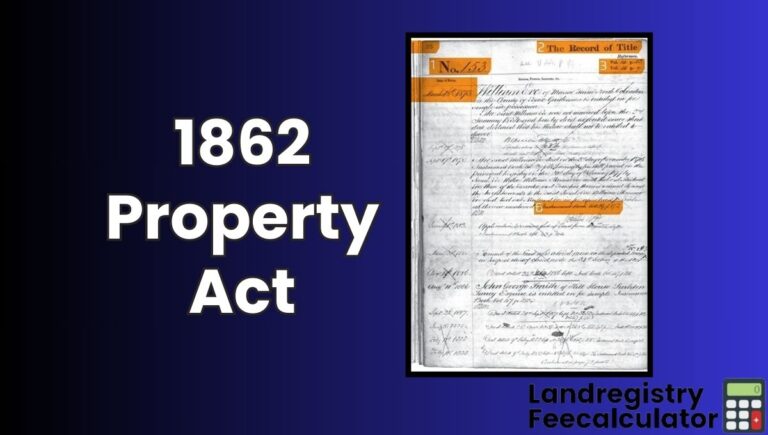The Land Registry Act of 1862 is a very important piece of legislation which has become an invaluable tool in unraveling the history of land and property ownership in England and Wales. The Act, passed in the mid-19th century, was the government’s first attempt to create an informative record of property ownership.
Today, genealogists, local historians and anyone curious about the land of their ancestors can take advantage of this law.
The Limited Scope of the 1862 Act
When we register land today, all the information is recorded in one place, in one order. But in 1862, things were a little different. At the time, only limited property was being registered – approximately 2,000 entries, divided into 272 handwritten and typed pages. These pages were made of parchment, waxed linen or paper and told the history of the ownership of a particular property.
This was very different from today’s registration system. In 1862, only a select few properties were being recorded, and even then a different method was being used. The convenient and streamlined land registration system that we have today did not exist then.
Delving into the Register’s Content
The register is divided into three parts, each part giving us different information:
- Registration of property with title:
- This section shows you the exact location of the property along with the parish and county.
- You can search exact location by entering specific place name.
- Entry of land title in the register:
- This section highlights the history of ownership.
- You can search for ancestral names and see if the land is registered there.
- This includes a history of ownership changes, including registrations, sales, address changes, marital status changes, and deaths.
- Record of mortgages and loans:
- This section explains the financial side of the property.
- Here you can find out when the property was mortgaged or rented out.
- Often copies of mortgage agreements or lease documents are also recorded to help you understand the financial status of the property.
A Guide to Reading the Register
Each entry in the register is a treasure trove of information, but to interpret it requires some study of the form and words used in it.
Key Ingredients:
- Title Number: Each application has a unique identification number which makes it easy to locate the record.
- Registration Type: The different parts of the registration are clearly titled so that you know which section you are studying (eg, land rights registration).
- Reference: This number helps you to access information in various parts of the registration of a particular property.
- Page numbers: These numbers are not always sequential, but can help locate a particular entry.
- Entry Date: Every change in ownership or property status is recorded with that date.
- Instrument Book Number: The number of relevant documents like will, marriage certificate or transfer agreement is given in this section which gives you more information about the history of the property.

Preserving and Expanding Acces
The registers of the Act of 1862 are important historical documents that tell the history of land ownership rights. Her Majesty’s Land Registry (HMLR) has attempted to preserve and digitize these registers. More than 15,000 registers are now available online, making it easy for people to search by name, area or title number.
However, there are some challenges. Land maps and other visual aids, which provide information on property, cannot be fully digitized due to their fragility. HMLR is looking for solutions to overcome this challenge and provide a more comprehensive picture of registered assets.
The Value of the 1862 Act Register
The Act Register of 1862, although limited in scope, provides a wonderful sample of property ownership in England and Wales in the 19th century. By studying the rich content of these laws and understanding the structure of the records, researchers can gain insight into the land, property transactions and economic conditions of their ancestors.
Continuous efforts are being made by HMLR to preserve and increase access to this historic resource. Because of this, many stories hidden in the register can be discovered and shared for generations to come.
